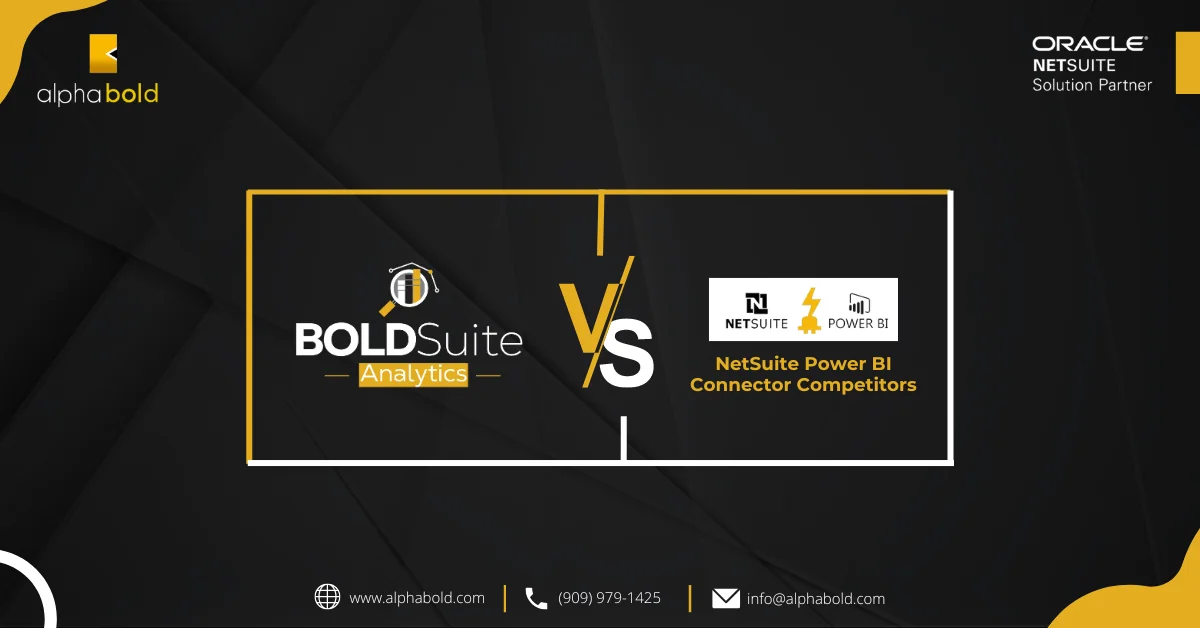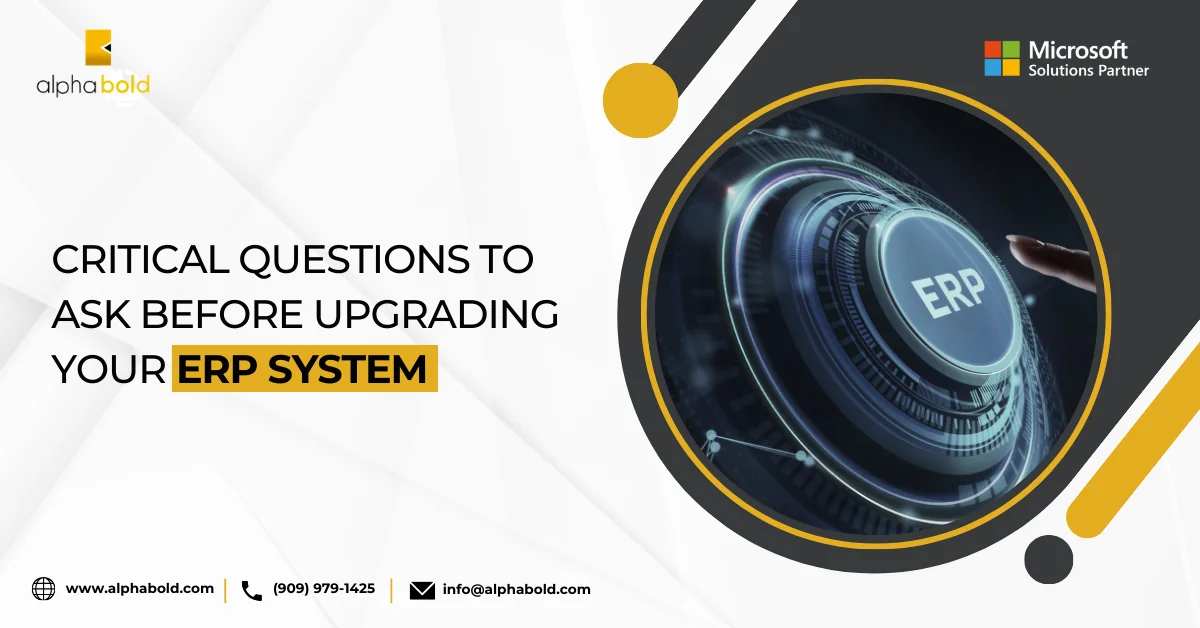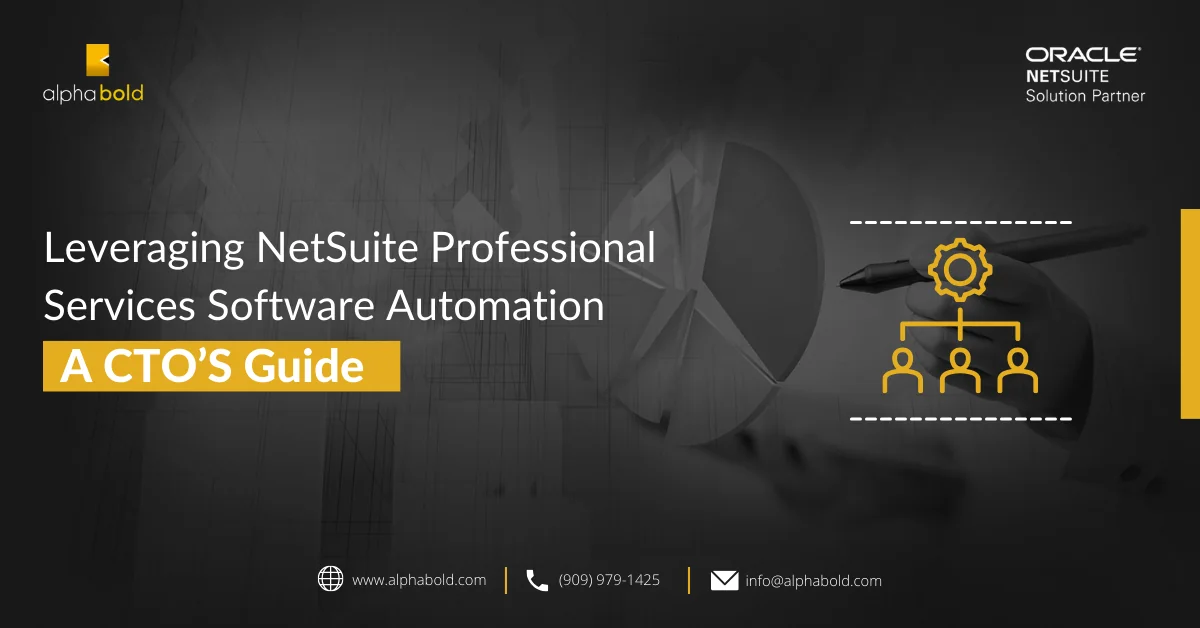Introduction
In the dynamic world of 2023, as businesses continue to adapt and transform, the role of ERP (Enterprise Resource Planning) systems has never been more crucial. These sophisticated software suites have become the backbone of operations, financial management, and strategic decision-making for organizations worldwide. For business leaders who spearhead growth, IT managers grappling with the intricacies of technology, ERP consultants advising on best-fit solutions, and small to medium-sized businesses (SMBs) aiming to optimize every facet of their operation, an ERP system can significantly shape their journey.
As such, this article delves deep into a comprehensive comparison between two titans in the ERP world: Oracle’s NetSuite and Microsoft’s Dynamics 365 Business Central. Whether you’re a seasoned professional or just beginning to explore the vast landscape of best ERP solutions, this side-by-side evaluation promises insights tailored just for you.
Why ERP Systems Matter for SMBs?
In an increasingly competitive business environment, Small to Medium-sized Businesses (SMBs) often find themselves juggling various challenges. From streamlining operations to ensuring accurate financial management, the complexities multiply as the business grows. This is precisely where the magic of ERP software comes into play, particularly for SMBs.
- Operational Efficiency: At the heart of every growing business is the necessity for seamless operations. ERP systems integrate various business processes into a single unified system. This means less time spent on manual data entry, fewer errors, and a more streamlined workflow. For SMBs aiming to compete with larger players in their industry, such efficiencies aren’t just nice to have; they’re essential.
- Financial Management: Cash flow, revenue tracking, and financial forecasting can be daunting, especially when managed across different platforms or, worse, manually. ERP software for SMBs comes equipped with tools to provide real-time insights into financial data. This ensures accuracy and empowers businesses to make informed, strategic decisions based on up-to-date financial information.
- Integrated Business Processes: One of the significant challenges SMBs face is siloed data—information trapped in one department that’s inaccessible to another. ERP systems eliminate these silos, ensuring that data flows seamlessly across departments. This interconnectedness enhances collaboration, reduces redundancy, and ensures that the entire organization is on the same page.
- Scalability: As SMBs grow, so do their needs and challenges. ERP systems are inherently scalable and designed to grow with the business. Whether expanding to new markets, introducing new product lines, or hiring more employees, the right ERP system can adapt without missing a beat.
- Making the Right Choice: With myriad options in the market, how to choose the right ERP system becomes a critical question. The answer lies in understanding the business’s unique needs, the system’s scalability, its integration capabilities, and, of course, the budget. SMBs need a system that offers flexibility without complexity and efficiency without excessive costs.
Therefore, ERP systems are invaluable allies in SMBs where agility and swift decision-making are paramount. They simplify complex processes and lay the foundation for sustained growth and competitiveness. As the business landscape evolves, making the right choice in ERP software for SMBs will undeniably be a cornerstone of success.
Read more: NetSuite for Small Businesses.
Overview of Oracle’s NetSuite
Born from the vision of creating a unified business management suite, NetSuite was founded in 1998 by Evan Goldberg. With its initial focus on creating web-hosted accounting software, it quickly expanded its horizon to cater to a myriad of business needs. By the time Oracle acquired it in 2016, NetSuite had already established itself as a leading cloud-based ERP solution with a global footprint.
Key Features of NetSuite by Oracle:
NetSuite boasts several key features that make it a competing ERP system:
- Cloud-based Solution: NetSuite pioneered cloud-based ERP solutions, allowing businesses to avoid the costs and complications associated with on-premises systems. This cloud-native approach means that IT managers no longer need to concern themselves with server maintenance, hardware upgrades, or system backups. Oracle NetSuite for IT managers simplifies the backend complexities, enabling them to focus on strategic IT initiatives.
- Unified Business Suite: One of NetSuite’s standout features is its comprehensive suite covering CRM, eCommerce, financials, and more, all under one roof. This ensures that businesses have a 360-degree view of their operations without the need to integrate multiple disparate systems.
- Real-time Data Access: Decisions are only as good as the data they are based on. With NetSuite, businesses benefit from real-time access to critical data, ensuring timely and informed decision-making across all departments.
- Customization and Scalability: Every business is unique, and NetSuite embraces this with open arms. Its customization options allow businesses to tweak the system according to their specific needs. Additionally, as the business grows, NetSuite scales accordingly, ensuring that new challenges are met with ease.
In the panorama of ERP solutions, Oracle’s NetSuite undoubtedly stands as a colossus, offering a blend of flexibility, comprehensiveness, and scalability. For IT managers, business leaders, and decision-makers, understanding the NetSuite advantages and disadvantages can pave the way for a more informed, strategic choice.
Top 3 Notable New Features for NetSuite’s 2022.1 Release
As your NetSuite environments are being updated to release 2022.1, we thought we’d highlight some of the new features that may be worth exploring.
Request a DemoOverview of Microsoft Dynamics 365 Business Central
From the tech giant that brought us iconic tools like Windows and Office, Microsoft’s foray into the ERP world has been equally remarkable. Originally known as Navision before Microsoft’s acquisition in 2002, the software underwent several transformations and rebrandings, culminating in the introduction of Dynamics 365 Business Central. This cloud-based, all-in-one business management solution was designed with the modern business in mind, offering a blend of CRM and ERP capabilities within Microsoft’s expansive Dynamics 365 suite.
Key Features of Microsoft Dynamics 365 Business Central:
Below, we’ve highlighted key features of Microsoft’s Dynamics 365 Business Central:
- Integrated Ecosystem: One of the standout attributes of Dynamics 365 Business Central is its seamless integration with other Microsoft products. Whether it’s Excel, Outlook, or Power BI, the software works in harmony with tools that many businesses use daily. For business leaders, this means a smoother workflow, reduced learning curve, and better overall efficiency. Dynamics 365 Business Central for business leaders is, thus, a continuation of the familiar Microsoft experience but supercharged for comprehensive business management.
- Automated Tasks and Workflows: To reduce manual processes and potential errors, Business Central offers automation capabilities. It allows businesses to automate recurring tasks, set up workflows, and improve overall operational efficiency.
- Adaptable Platform: Recognizing the diverse nature of businesses, Dynamics 365 Business Central offers a high degree of adaptability. Companies can customize the platform to their specific industry requirements and operational needs. This adaptability extends to its Dynamics 365 integration capabilities, allowing businesses to effortlessly incorporate other Dynamics 365 applications or third-party solutions.
- Real-time Insights: Leveraging the power of Microsoft’s data and analytics tools, Business Central offers real-time insights, dashboards, and reports. Business leaders can thus make data-driven decisions swiftly and confidently.
- Familiar Interface: Given its Microsoft lineage, many users find the interface familiar and user-friendly, reducing the onboarding time.
- Robust Security: Leveraging Microsoft’s enterprise-grade security features, businesses can be assured of data protection, regulatory compliance, and risk management.
- Scalability: As businesses grow, so can their use of Business Central. Whether adding more users or integrating advanced functionalities, the platform scales smoothly.
In conclusion, Microsoft’s Dynamics 365 Business Central stands as a testament to the company’s dedication to empowering businesses of all sizes. It’s a holistic ERP solution designed with modern challenges and opportunities in mind. For business leaders, especially those already entrenched in the Microsoft ecosystem, the transition to or adoption of Business Central might be a strategic step forward. Considering its extensive features, integration capabilities, and the backing of a tech behemoth, it’s undeniably a solution worthy of consideration.
Are you Looking for Business Central Services?
Microsoft Dynamics 365 Business Central is a comprehensive accounting and finance management tool that effortlessly links business operations between various departments.
Request a DemoA Side-by-Side Feature Comparison: NetSuite Oracle vs. Dynamics 365 Business Central
When evaluating ERP solutions, especially powerhouses like Oracle’s NetSuite and Microsoft’s Dynamics 365 Business Central, a feature-by-feature comparison can provide a clearer picture of what each brings to the table. Let’s study the key features of Business Central vs. Oracle NetSuite in detail.
1. Deployment Options:
NetSuite Oracle: Cloud-native, designed to be accessed anywhere, anytime, without the need for on-premises hardware.
Dynamics 365 Business Central: Primarily cloud-based, but also offers on-premises deployment for businesses that prefer or require it.
2. Integration Ecosystem:
NetSuite Oracle: NetSuite offers a robust set of integration APIs and boasts a large ecosystem of external applications. This can be seen as a huge advantage for modern businesses leveraging multiple applications as part of their system architecture.
Dynamics 365 Business Central: With Dynamics 365 integration capabilities, it seamlessly melds with other Microsoft tools (like Office 365) and offers a wide array of third-party integrations. One key use case of this direct integration is the Excel import capability. A user can export the COA into Excel, make adjustments, and then bring it back into the system. This facilitates the import of Vendors, Customers, etc.
3. Customization and Scalability:
NetSuite Oracle: Offers SuiteCloud, a comprehensive platform for customization through configuration (in other words, codeless customization), making it highly adaptable. Scalability is one of its strong suits, suitable for businesses of various sizes.
Dynamics 365 Business Central: Adaptable platform with customizable fields, forms, and workflows. Its tie to the larger Dynamics 365 suite ensures scalability as business needs evolve.
4. Financial Management:
NetSuite Oracle: Comprehensive financial management features, including real-time financial consolidation, billing, revenue recognition, and financial planning. NetSuite is a direct posting system, while Business Central still follows an obsolete batching architecture.
Dynamics 365 Business Central: Offers robust financial management tools, from budgeting to cash flow forecasting. Seamless integration with Excel is a bonus for financial reporting.
5. CRM and e-Commerce:
NetSuite Oracle: Incorporates a CRM system and provides a SuiteCommerce module, allowing businesses to manage both B2B and B2C interactions effectively, allowing businesses to manage products, inventory, and customers in a single all-inclusive platform.
Dynamics 365 Business Central: While it has built-in CRM features, it often relies on integration with Dynamics 365 for Sales for advanced CRM capabilities. E-commerce is typically handled via third-party integrations.
6. Reporting and Analytics:
NetSuite Oracle: Boasts real-time analytics with a customizable dashboard. SuiteAnalytics allows businesses to create reports without IT assistance.
Dynamics 365 Business Central: Emphasizes its ties to Power BI for visual analytics and offers built-in intelligence tools. Integration with Excel provides additional reporting flexibility.
7. User Experience:
NetSuite Oracle: Provides a consistent, modern user interface across devices with a customizable dashboard tailored to roles.
Dynamics 365 Business Central: Features a familiar Microsoft interface, intuitive to users familiar with other Microsoft products. The Role Center allows for personalized dashboards based on roles.
8. Pricing:
NetSuite Oracle: Pricing can be on the higher side but is based on the number of users and add-on modules. Often seen as an investment for long-term growth.
Take a deeper dive into NetSuite pricing and hidden costs: Uncovering NetSuite’s Hidden Costs.
Dynamics 365 Business Central: Offers tiered pricing based on the number of users and required features. Some businesses might find it more affordable initially, but costs can grow with additional needs. As businesses desire customization outside of the platform’s original UI and database, the development and maintenance costs begin to soar.
Both Oracle’s NetSuite and Dynamics 365 Business Central offer a plethora of features designed to cater to businesses of all sizes and sectors. The choice ultimately depends on specific business requirements, existing software ecosystems, budget, and long-term goals. Furthermore, an organization’s existing technology stack will also act as a catalyst for its selection process. Companies will often prioritize a platform that can easily integrate with their existing solutions. By evaluating this side-by-side comparison, decision-makers can take a step closer to choosing the ERP solution that best aligns with their vision and operational needs.
Drive Financial Efficiency with AlphaBOLD's NetSuite Solutions!
Looking to boost financial performance? Let AlphaBOLD's NetSuite experts assist you in optimizing your financial management processes.
Request a DemoOverview of Pricing and Affordability
The adoption of an ERP system is a significant investment, both in terms of finances and the future trajectory of a business. When it comes to “Business Central vs. NetSuite pricing,” the landscape can initially seem a bit complex. However, understanding their pricing models can provide clarity, especially for SMBs who need to balance features with budgets.
NetSuite Oracle Pricing:
Structure: NetSuite’s pricing is modular. The core fee includes a base suite, and additional modules can be added based on specific business requirements. This allows businesses to pay for what they need and scale up as they grow.
Licensing: It operates on a subscription model, with prices varying based on the number of users and selected modules.
Other Considerations: Given its comprehensive offerings, NetSuite can sometimes come off as pricier than its counterparts. However, businesses need to factor in the reduced IT costs, given it’s a cloud solution and the value of having an all-in-one solution.
Dynamics 365 Business Central Pricing:
Structure: Business Central also operates on a subscription basis. Microsoft offers different plans based on the functionalities required – Essentials or Premium.
Licensing: Like NetSuite, pricing varies with the number of users. There’s a clear distinction between full users (who need extensive access) and team members (who might only need limited functionality.
Other Considerations: A notable advantage for many SMBs is Business Central’s seamless integration with other Microsoft products, potentially reducing costs if the business is already invested in the Microsoft ecosystem.
Considerations for SMBs:
- Initial vs. Ongoing Costs: While the initial investment is essential, SMBs should also consider ongoing costs, like additional user licenses, updates, or added modules.
- Total Cost of Ownership (TCO): Beyond just the software costs, think about training, potential hardware investments, integrations, and any potential customizations.
- Return on Investment (ROI): A slightly pricier ERP can sometimes provide a better ROI if it offers features that can significantly boost efficiency or open up new business avenues.
- Future-proofing: Given the rapid pace of technological change, SMBs should consider how adaptable and scalable their ERP system is. The best ERP systems in 2023 will likely prioritize flexibility, AI integrations, and cloud capabilities.
- Hidden Costs: Be wary of potential hidden costs, like those for additional storage, training, or support. It’s essential to get a clear picture from vendors about what’s included in the subscription and what might incur additional charges.
The battle of “Business Central vs. NetSuite pricing” doesn’t have a one-size-fits-all answer. SMBs, with their unique challenges and growth aspirations, need to delve deep into their operational requirements, future plans, and budget constraints to make an informed decision. In the rapidly evolving landscape of the best ERP systems in 2023, affordability should be balanced with functionality, adaptability, and scalability. Making the right choice now can set the stage for sustainable growth and success in the years to come.
Implementation and User Experience
The choice of an ERP system doesn’t stop at the feature set or pricing; the practicalities of implementation and the user experience play a pivotal role. After all, the most feature-rich system might not be the best fit if its deployment is cumbersome or if its interface confounds users. With insights from “ERP system reviews” and real-world “NetSuite implementation experiences,” let’s delve into this often overlooked yet vital aspect.
NetSuite Oracle Implementation and User Experience:
Diving into the world of NetSuite Oracle, it’s imperative to understand not just its vast capabilities but also the realities of bringing it to life within an organization. As with any major system, the road to full utilization is paved with decisions on implementation, training, and user adaptability. Drawing from a wealth of “NetSuite implementation experiences” and reviews, let’s explore the journey from initial setup to everyday usage, uncovering both the highs and challenges faced by businesses.
- Ease of Implementation: NetSuite, being a cloud-native solution, eliminates many traditional installation hurdles. However, given its comprehensive and customizable nature, businesses often need to invest in a proper setup, possibly even hiring consultants to ensure that the system is tailored to their needs.
- User Feedback: From “NetSuite implementation experiences” shared online, the initial setup can be complex, but it’s often a one-time effort. Once implemented, many users appreciate the intuitive nature of the interface and the customization capabilities.
- Training: Given NetSuite’s expansive feature set, proper training is a must. Oracle does provide extensive documentation, webinars, and training modules to aid this process.
- User Experience: The dashboard-driven interface is generally well-received, allowing users to have a tailored experience based on their role. Integration with other tools, however, might sometimes require additional steps or third-party solutions.
Dynamics 365 Business Central Implementation and User Experience:
Navigating the intricate landscape of Dynamics 365 Business Central, we delve into its implementation intricacies, user feedback, training resources, and overall user experience within the familiar realm of Microsoft.
- Ease of Implementation: Business Central benefits from the familiarity of the Microsoft ecosystem. Businesses already using Microsoft tools may find integration smoother. Implementation, though simpler than some ERPs, still requires proper planning, especially for data migration and role-based setups.
- User Feedback: “ERP system reviews” indicate that users value Business Central’s modern interface and its seamless integration with tools like Excel and Outlook. Some users, however, note occasional glitches or slow loading times, especially with extensive integrations.
- Training: The Microsoft Learn platform and extensive online resources ensure that businesses have all the tools they need to train their teams effectively.
- User Experience: Often praised for its intuitive layout and role-tailored dashboards, Business Central offers a user experience that’s familiar to those accustomed to the Microsoft environment. This can reduce the learning curve significantly.
The pathway to ERP success is not solely determined by features or cost but by the everyday experiences of users and the hitches (or lack thereof) during implementation. While both NetSuite and Business Central come with their own sets of challenges and strengths, the shared sentiment across “ERP system reviews” is clear: proper planning, training, and customization are vital. Whether it’s leveraging the cloud-native capabilities of NetSuite or diving deep into the integrated Microsoft world of Business Central, businesses should keep the end-user at the forefront of their decision-making process.
Ready to Start with Microsoft Dynamics 365 for Business Central?
Get your business on the fast track to success with Dynamics 365 for Business Central. Experience seamless integration, powerful features, and unparalleled efficiency. Take the first step towards transformation – Start Now!
Request a DemoIntegration and Customization
In our digitized business world, an ERP system isn’t an island. Its true strength often lies in its ability to seamlessly integrate with other tools and platforms while offering robust customization to cater to unique business needs. Given the importance of these aspects, let’s dissect the “Dynamics 365 integration capabilities” and “NetSuite customization options.”
NetSuite Customization Options:
SuiteCloud Platform: One of NetSuite’s most potent features is its SuiteCloud Development Platform. This allows businesses to tailor the software to their specific requirements, be it custom applications or modifications to existing features.
SuiteBuilder: A more user-friendly tool within the NetSuite ecosystem, SuiteBuilder lets non-developers customize fields, records, and even the user interface, making personalization more accessible.
SuiteScript: For those looking for deeper customization, SuiteScript offers a JavaScript-based API. This provides businesses the flexibility to automate processes, validate data, or even develop new applications within NetSuite.
NetSuite Integration Capabilities:
SuiteTalk: This web services integration makes it possible for NetSuite to connect with a plethora of other platforms, both cloud-based and on-premise.
SuiteApp: An online marketplace where businesses can find pre-built applications that extend the capabilities of NetSuite. These apps, built by third-party developers, cover a wide range of functionalities, ensuring that businesses can integrate the tools they need.
Dynamics 365 Business Central Customization Options:
Power Platform: Microsoft’s Power Platform, consisting of Power Apps, Power BI, and Power Automate, allows businesses to extend and customize their Dynamics 365 experience. Users can develop apps, automate workflows, and generate insightful analytics, all tailored to their needs.
Extensions: Business Central supports creating extensions, which means companies can add new functionality without modifying the core application. This makes updates smoother and ensures that customizations are preserved.
Dynamics 365 Integration Capabilities:
Microsoft Ecosystem: One of the most notable “Dynamics 365 integration capabilities” is its seamless integration with other Microsoft products, such as SharePoint, Teams, and the Office Suite. This ensures a unified experience and streamlines workflows.
APIs and Web Services: Dynamics 365 Business Central exposes a set of APIs and web services, enabling it to connect with third-party applications, eCommerce platforms, CRM systems, and more.
Both NetSuite and Dynamics 365 Business Central present a plethora of “NetSuite customization options” and “Dynamics 365 integration capabilities,” respectively. While NetSuite offers deep customization through its SuiteCloud platform and a vast integration marketplace with SuiteApp, Dynamics 365 leverages its strong ties to the broader Microsoft ecosystem and the versatility of the Power Platform. Businesses, therefore, need to evaluate not only their current needs but also anticipate future requirements and expansions to make the most informed choice.

ERP Selection Checklist
Streamline your ERP selection process with our comprehensive checklist, ensuring you make informed decisions for your business's future success.
Download Guide
Recommendations
The world of ERP solutions is vast, intricate, and multifaceted. Whether it’s the expansive customization options or the diversity of integration capabilities, the choices available can be daunting. However, with informed “recommendations for enterprise resource planning software,” businesses can navigate these waters and find a solution that’s tailored to their unique needs.
How to Choose the Best ERP Solution?
Embarking on the ERP selection journey is no simple feat; it’s akin to charting a course through intricate waters. While the lure of advanced features and competitive pricing is strong, it’s essential not to lose sight of the shores of your business’s intrinsic needs and potential challenges. From understanding the very fabric of your organization to consulting the compass of experts, let’s set sail and navigate these crucial decision-making parameters.
- Assess Your Needs: Before diving into features or pricing, it’s imperative to understand your business’s specific requirements. This includes current operational needs, anticipated growth, and any sector-specific demands.
- Integration Needs: If your business is already leveraging certain tools or platforms, consider how well each ERP will integrate with them. Dynamics 365, for instance, offers seamless integration within the Microsoft ecosystem, while NetSuite’s SuiteApp offers a marketplace of third-party integrations.
- Customization and Flexibility: If your business requires a bespoke solution, delve into the customization options available. NetSuite’s SuiteScript and Dynamics 365’s Power Platform both offer deep customization, but their methodologies differ.
- Budgetary Constraints: As we’ve previously discussed, both ERPs have different pricing structures. Consider the total cost of ownership, which includes not just the licensing fees but also implementation and potential customization costs.
- Consultation: Given the technical nature of these platforms, it’s beneficial to “choose the right ERP system” by consulting with IT professionals or ERP consultants. They can provide insights that might not be immediately apparent and can help gauge the feasibility of implementation.
Further Reading: ERP Software Comparison: Key Insights for Executives
CFO’s Guide to NetSuite: Navigating the ERP Investment
Selecting the right Enterprise Resource Planning (ERP) system isn’t merely an IT prerogative but a vital financial strategy. In this vast sea of ERP choices, NetSuite emerges as a beacon for many.
Read MoreConclusion
The decision between Oracle’s NetSuite and Microsoft’s Dynamics 365 Business Central isn’t a one-size-fits-all answer. It’s a journey of understanding organizational needs, budgetary considerations, and future aspirations. While both platforms are formidable, the best choice will invariably hinge on the unique demands of each business.
To truly make an informed decision, enterprises should reflect upon their specific requirements, consult with professionals, and always keep their eyes on the horizon. After all, an ERP system is not just a tool for today but an investment in the future. The mantra remains consistent: Understand, Consult, and Tailor – that’s the route to “choose the right ERP system” that fits like a glove.









